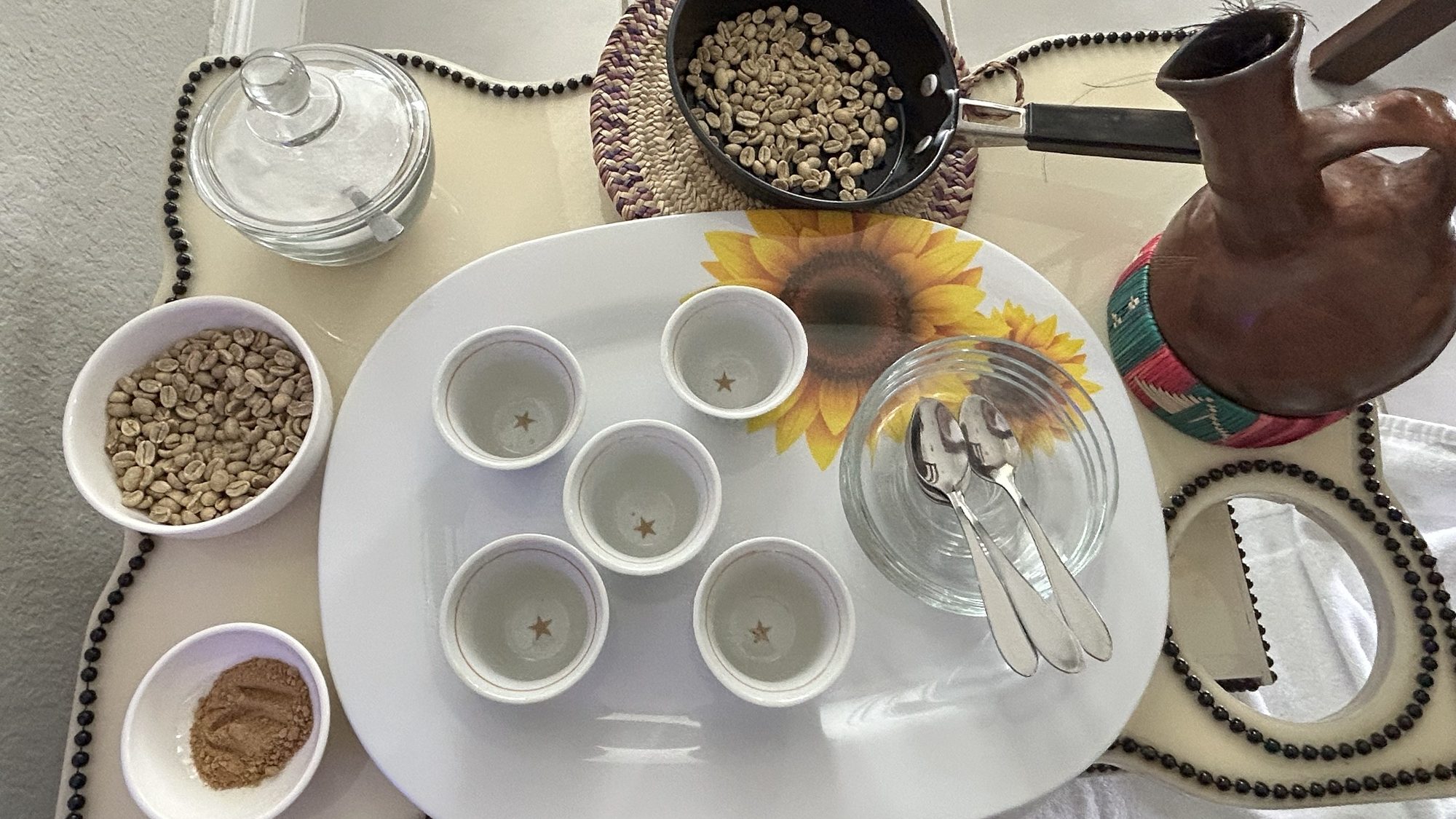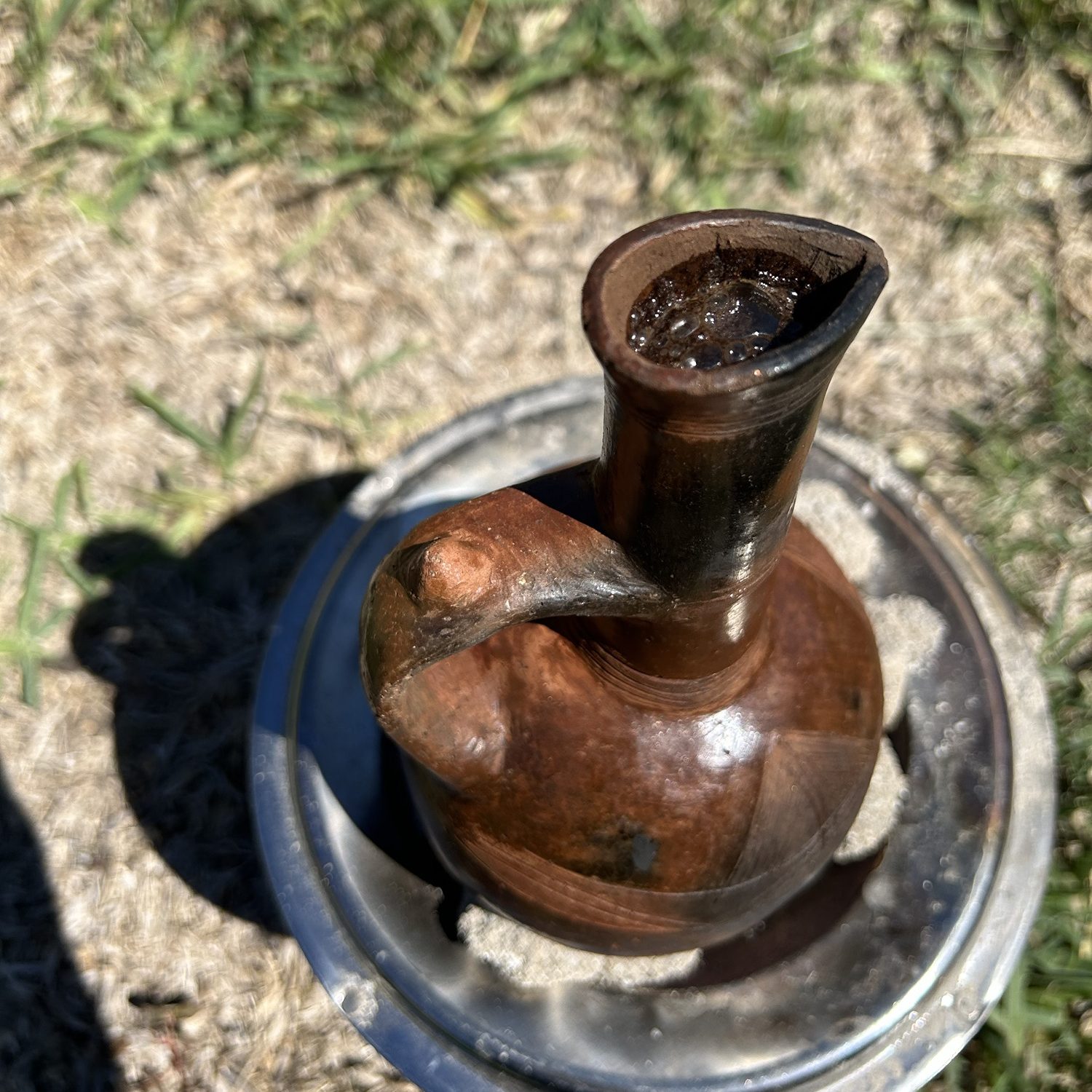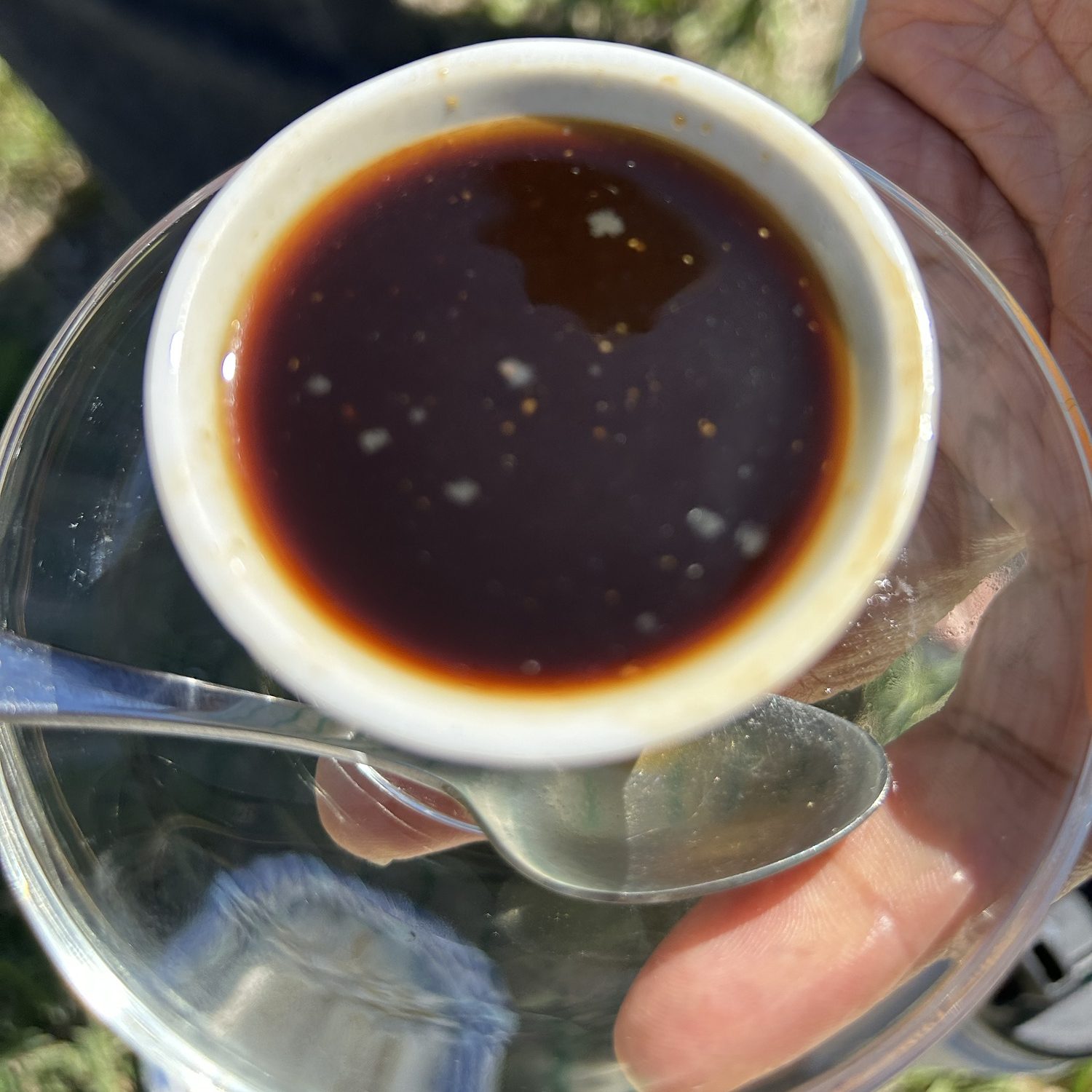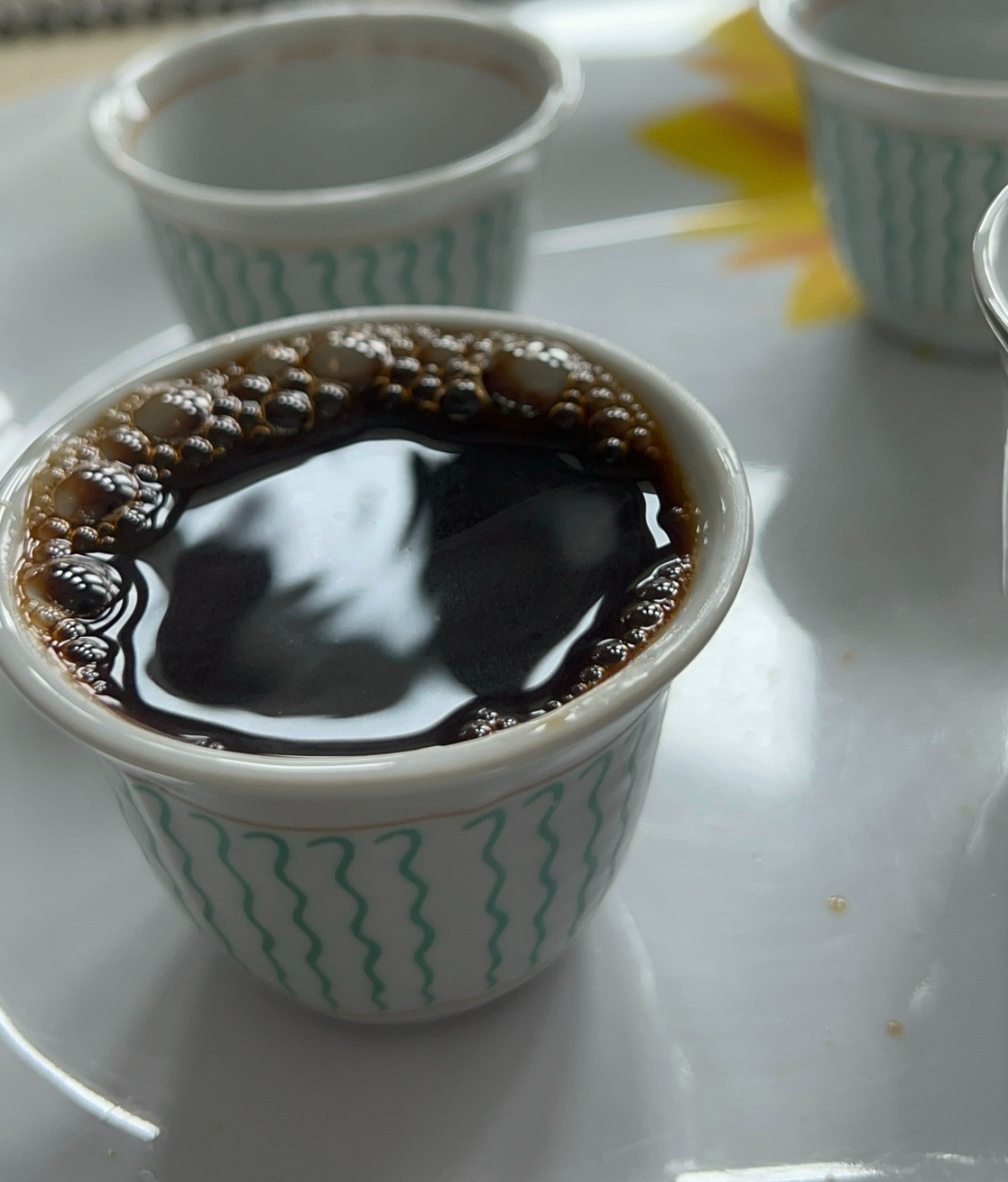ቡን
Introduction
Coffee ceremony (Bun ቡን in Tigrinya and Buna ቡና in Amharic) in Eritrea and Ethiopia hold a special place. It symbolizes hospitality, community, and tradition. Coffee ceremony is a vibrant cultural practice, a ritual that transcends mere caffeine consumption to become a symbol of connection and celebration. In this blog, we will explore the rich tradition that brings together family, friends and neighbors over the aromatic brew of coffee.
The essence of the ceremony
In Eritrea and Ethiopia, the coffee ceremony isn’t just about a quick caffeine fix; it’s a social event that fosters connections and strengthens relationships. Typically conducted by the woman of the household, the ceremony involves meticulous steps that have been passed down through generations.



Traditionally, there are three rounds. Each round consists of two servings. A fourth round is customary. Sometimes, it can go up to seven rounds especially if the chitchats are flowing and participants do not seem to end their socializing then it can go up to seven rounds. Each round has a specific name associated with it. We call the first round “awel” ኣወል, a term borrowed from the Arabic language to mean ‘first’; the second round “kal’ayti” ካልኣይቲ, meaning ‘second’; the third round “bereka” በረካ, which means ‘to be blessed’; and the fourth round “dereja” ደረጃ. From start to finish, coffee ceremony usually takes 2-3 hours. Every minute is worth it.
Equipment needed

To make a traditional Eritrean and Ethiopian Coffee, you’ll need the following:
- Unroasted coffee beans – ቡን
- Roasting pan called menkeshkesh (መንከሽከሽ) if you don’t have one you can use a small fry pan
- Meshrefet (መሽረፈት) – a small and colorful woven mat
- Jebena (ጀበና) – this is your coffee machine1.
- A charcoal stove if making coffee outside or a single burner electric stove if making coffee indoors
- Finjal (ፊንጃል) -a small cup where you traditionally drink coffee from. They are mostly white with with intricate designs on the outside.
- Sugar – optional
- Spices like ginger, cinnamon, clover and/or cardamom – optional
- Stainless steel frothing pitcher
- Lif (ሊፍ) – this is the coffee filter. To make a lif, you need to wrap (like a cotton ball) a piece of hair from a horsetail or ox tail. This might sound weird, but once you wash the hair and sterilize it properly, it is ready for use. 2.
- A woven circular sife to place the jebena (usually this comes with the Jebena as a set).
- Small saucers and spoons
NOTE: An Eritrean Jebena usually have one spout whereas an Ethiopian Jebena has two spouts. In this blog, we will use an Eritrean Jebena – which has one spout only.
Preparation
Roasting Coffee beans
The process begins with the selection of fresh green coffee beans. People often tell me they’ve never seen unroasted coffee beans. You can easily find them at an Eritrean or Ethiopian stores and online. Make sure they are organic as they all aren’t harvested the same.
Rinse ½ a cup of coffee beans and place them in ‘menkeshkesh’ መንከሽከሽ which is a traditional roasting pan. Roast the green coffee beans over a charcoal stove, shaking it occasionally to ensure the coffee beans are roasting evenly and simultaneously.

As the coffee beans crackle and release their aromatic oils, the air fills with an enticing fragrance that signals the start of the ceremony. Once roasted to perfection (usually a medium dark roast ), the woman making the coffee walks around the participants to let them smell the roasted coffee as they wave the smoke towards their faces.


ground the Coffee beans
After that, pour the coffee beans onto a small and colorful woven mat called ‘meshrefet’ መሽረፈት to let it cool down. Then ground the roasted coffee beans using an electric coffee grinder. Traditionally, it was common to ground coffee by hand using a traditional mortar and pestle. Ensuring a fine consistency that will yield a robust brew. Place the powdered coffee back on to the meshrefet. Add a ground ginger or other spices like cardamom, cloves and/or cinnamon.



Place Coffee in jebena
This next step is the tricky part, as you need to carefully put all the powdered coffee into the coffee pot ‘ jebena’ ጀበና. While the ground coffee is still on the meshrefet, carefully fold the meshrefet into a funnel shape. As the top part of the jebena is narrow, you need to carefully place all the ground coffee (a small amount at a time) in the jebena. Add 2-3 cups of drinking water and swirl the mixture to mix the coffee and water.


Brewing
Set the jebena atop the charcoal stove. Once the coffee starts to simmer and boil, it creates a rich, flavorful coffee known as “bun” ቡን. During the first round, when the coffee is brewing properly it will start to overflow creating a foam. You carefully need to catch the flowing hot coffee in a stainless steel frothing pitcher and put it back in the jebena. This shows that the coffee is ready.

Presentation
Remove the jebena from the stove and let it sit on the sife to cool down for 3-5 minutes. Cover the spout of the Jebena with a lif ሊፍ and make sure the jebena sits tilted as this helps the ground coffee to settle. Once ready, carefully pour the coffee into the small cups known as “finjal” ፍንጃል in Tigrigna.
The eldest or most honored individual blesses the snacks3 while the hostess is pouring coffee. The youngest then passes the snacks around for everyone to enjoy. It is disrespectful to start eating snacks before coffee is ready. Then the hostess serves the coffee to each guest, starting with the eldest or most honored individual present.


Conversations flow freely, punctuated by sips of the aromatic brew as guests enjoy their coffee. After everyone finishes their first cup of coffee, the hostess gathers the cups and pours the second part of the first round. After everyone has their second cup of coffee, the hostess adds more water into the jebena and this starts the brewing for the second round. This communal experience fosters a sense of unity and belonging, reinforcing the bonds between participants’.

The Eritrean and Ethiopian coffee ceremony is more than just a ritual; it is a testament to the tradition, community, and shared experiences. Through its meticulous preparation, vibrant presentation, and profound symbolism, it brings people together in a way that transcends language and cultural barriers. As we celebrate this age-old tradition, let us also reflect on the value of slowing down, connecting with others, and finding joy in the simple pleasures of life.
- Jebena is a traditional coffee pot made of clay. If your jebena ጀበና is new, you need to season it first to ensure there is no aftertaste of clay when making coffee ↩︎
- If you cannot find horsetail or ox tail for lif, you can substitute it with a spawn netting. ↩︎
- The most common snack is freshly popped popcorn. Other snacks, like cookies, candy, dried fruits and bread are commonly added along popcorn. ↩︎
![A logo for a site 'Healthy Eritrean Ethiopian Recipe' celebrating the flavors of Eritrean and Ethiopian cuisine, capturing the essence of culinary inspiration in a design that is simple, modern, authentic and inviting that also includes Injera and traditional coffee pot jebena. Coloring can be simple with black and white with a hint of cultural symbolism that reflects the rich culinary heritage. Also incorporate the name of the website around it [with elegant typography] [that conveys warmth and hospitality] [and a contemporary twist]](https://healthyeritreanethiopianrecipes.com/wp-content/uploads/2024/07/img-KBUrZG22xy0XYBMveQyIE5yY.png)

Leave a Reply